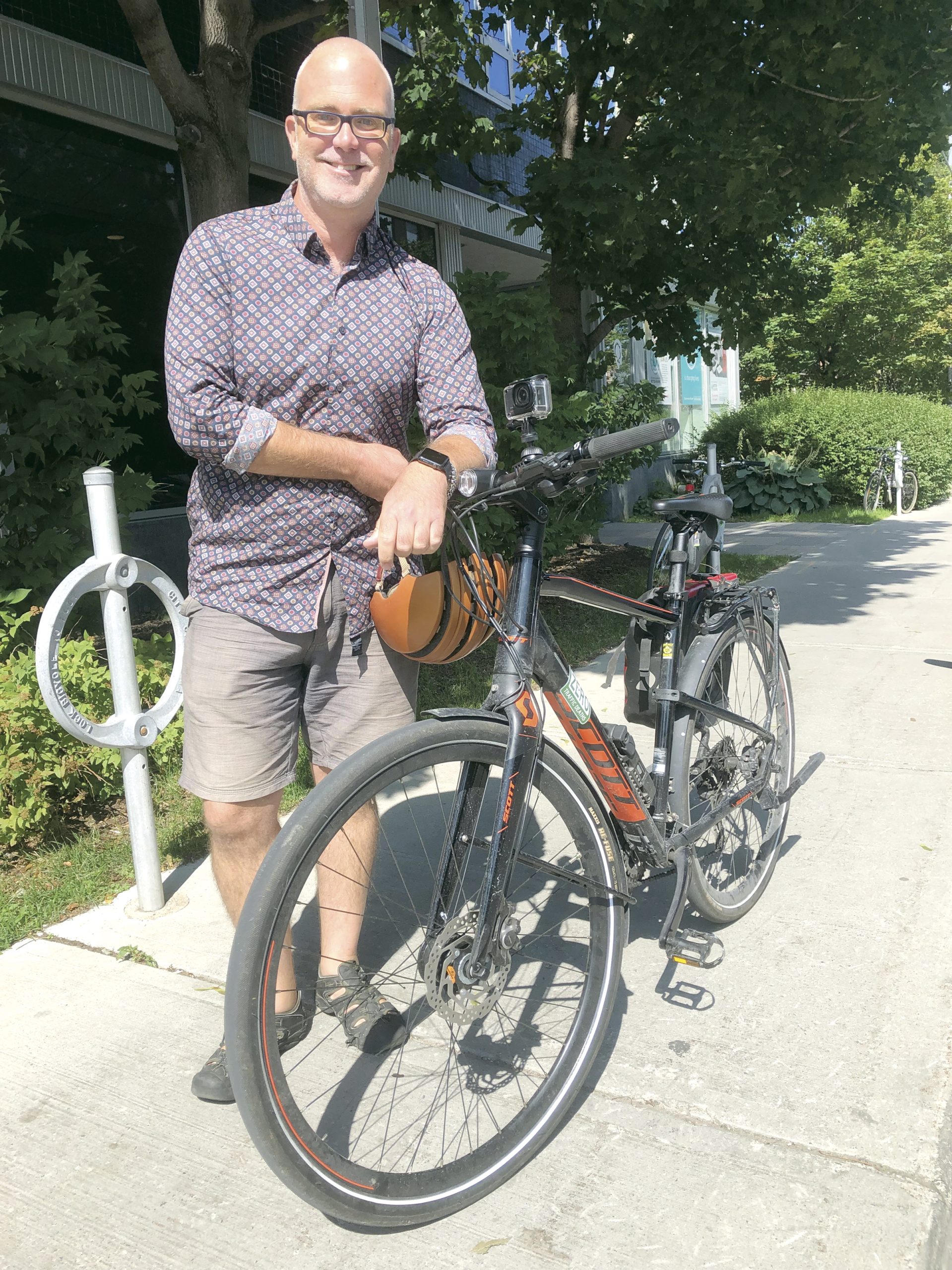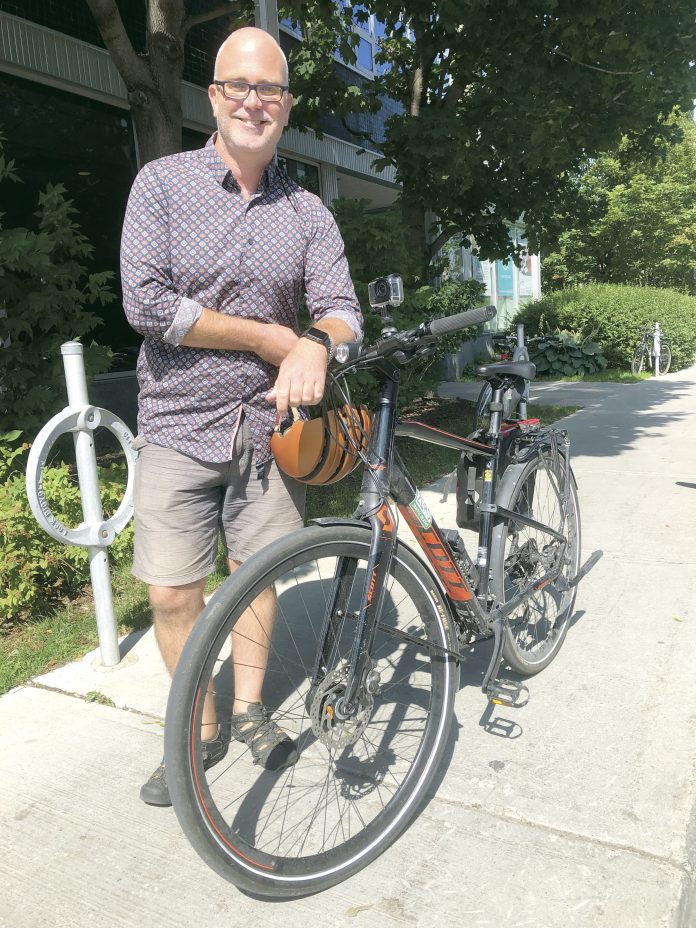 In the second part of his conversation with KT, Kitchissippi Councillor Jeff Leiper talks infill, upcoming development applications and cyclist safety.
In the second part of his conversation with KT, Kitchissippi Councillor Jeff Leiper talks infill, upcoming development applications and cyclist safety.
KT: You’ve talked about infill being a priority for this term of council. Can you expand on what’s happening there?
JL: I think residents are very aware that we’ve seen a dynamic for over a decade now in Westboro where single-family homes are being bought on relatively large lots. The single is demolished and two semi-detached (houses) go up in its place. Often, those semi-detached (houses) have a secondary dwelling in them. So where there was one dwelling, now there are four. The actual process of building infill continues to be one that needs to be reined in. Residents can expect that the pressures that arise from the new official plan, with its new emphasis on intensification, may push developers to seek more than that four-to-one ratio. What developers are looking for now is to actually put two long, semi-detached (houses), to sever that original lot of subdivision. (They want to) put a long semi-detached – so front to back semis – on each one of the new lots, each of which has a new secondary dwelling in it. So the ratio from that original lot goes from one dwelling to eight. I think that’s too much. The new official plan is going to push for greater intensification, especially near transit, which is the right move. But we have to be thoughtful about what the limits are on that. My own preference is to see that (Westboro infill) study normalize the level of intensification that we’ve been seeing for a decade and that we know will continue. I want to make sure we put a line in the sand to say that the new normal is not going to become eight-to-one.
KT: There are a couple of other development applications I wanted to talk about. What do you think of Trinity’s proposal for 951 Gladstone Ave. (a partnership with CLV Group and PBC Real Estate Advisors to build three apartment towers of 35, 33 and 31 storeys near the future Gladstone LRT station)?
JL: The discussion that (Somerset Coun. Catherine) McKenney and I are having with the developer is less around the height and density and more around trying to ensure that it’s truly transit-focused by limiting the amount of parking. The big discussion continues to be how will we treat the artists who are currently residents in the buildings that are around there. I’m encouraged by the direction that the developer is taking. I think there’s a pragmatic recognition of the reality that those buildings are going to be tall and dense. I want the architecture to be great. I want there to be affordable housing. I want the artists to be treated well, and I want it to be truly transit-oriented by limiting the amount of parking. If those are accomplished, then I’m not going to fight the height. They recognize that we want affordable housing, and I think the discussion is about how to accomplish that rather than whether to accomplish that.
KT: What else is happening on the development front?
JL: We know that not this fall, but over the rest of this term of council, there will be proposals made for greater height on Richmond Road. My initial approach with all the developers is to let them know I want to stick to the existing traditional main-street plan which calls for buildings of no greater than six to eight stories. I think we deviate from that plan at the peril of potentially creating a much less friendly traditional main street. We love our main street in this ward. It’s a pedestrian-friendly environment – we don’t want any repeats of the convent site, where the pedestrian-friendliness of that block has been destroyed by a very poorly thought-through, too-dense building. I don’t have any reason to believe that the city is looking at a deviation from their six- to eight-storey traditional main street.
KT: There’s been a lot of talk recently about Vision Zero – the project to create a road system where there are no fatalities or serious injuries. What’s your opinion of council’s approach to Vision Zero when it comes to cycling?
JL: I was disappointed that council chose, when we brought that motion, not to immediately embrace Vision Zero principles. However, we have a safety review that’s coming this fall. Cyclists are getting hit in this city every day. Accomplishing our second of the five big moves in our official plan – a majority of trips accomplished by something other than the private automobile – means that we have to get much more aggressive on cycling. We can’t do that if cycling is not safe. And right now, people just have to read the headlines to see how unsafe the environment is for cyclists in Ottawa. We need to invest in our cycling infrastructure to keep cyclists safe in order to ensure that our transportation in this city is going to be sustainable for the foreseeable future.
KT: What specifically do you think needs to be done?
JL: Segregated cycling infrastructure on all of our main corridors. It’s not going to be every street. But too many of our streets, like Wellington West and Richmond, where there should be segregated cycling infrastructure, there’s not. And we need to accelerate those (projects). We have a cycling master plan. But we’re accomplishing it too slowly. And the other piece of Vision Zero is we need to slow traffic down in this city. There is a limit to what government can do. But we do need to make sure that we are doing what we can, which includes lowering speed limits, ensuring protected intersections for cyclists and for pedestrians, always prioritizing whenever we have decisions to make about how streets function, our most vulnerable users. We can play a big role in terms of making those investments. And adopting the Vision Zero principle is the first step. Investing the money is the second step. But there is something which I would like residents of Ottawa to consider, which is a big part of it is on them. If you don’t want people to speed, start with yourself. Make it a point never to speed. There’s a huge cultural component to this as well.
